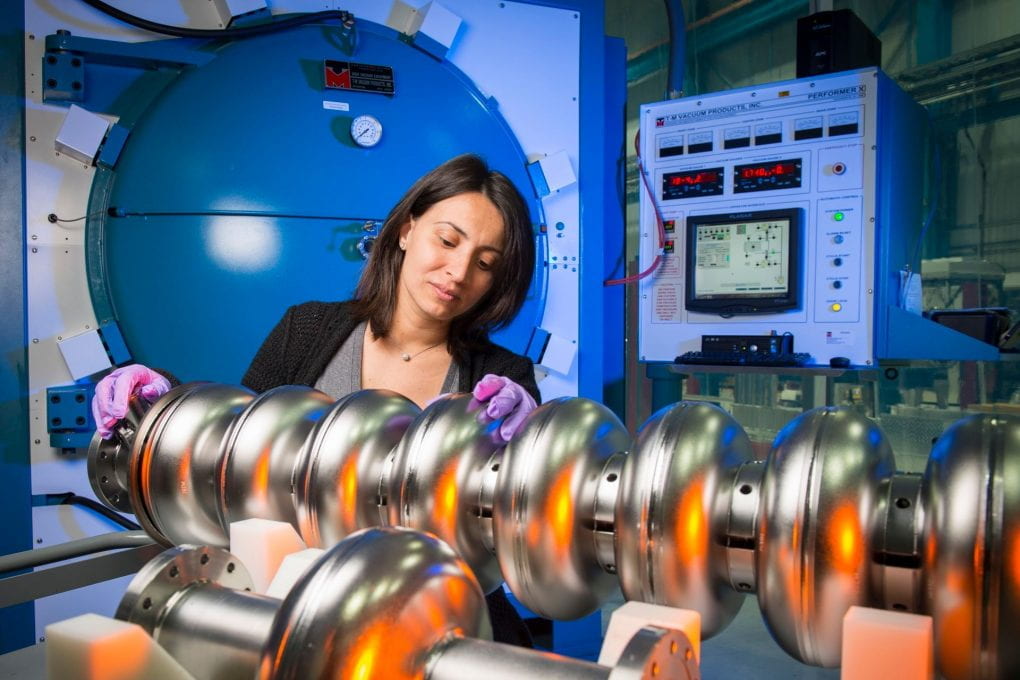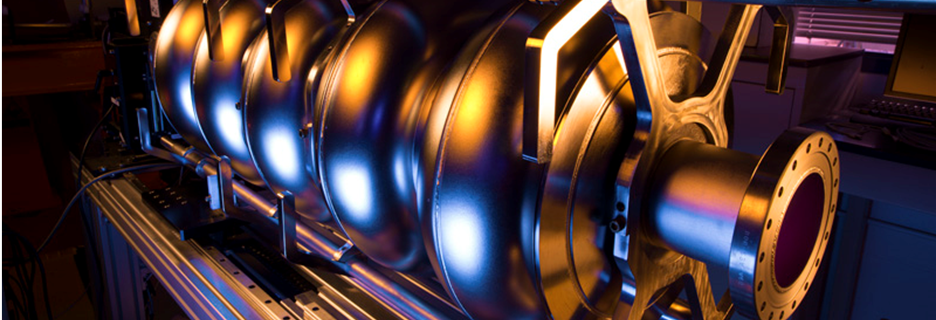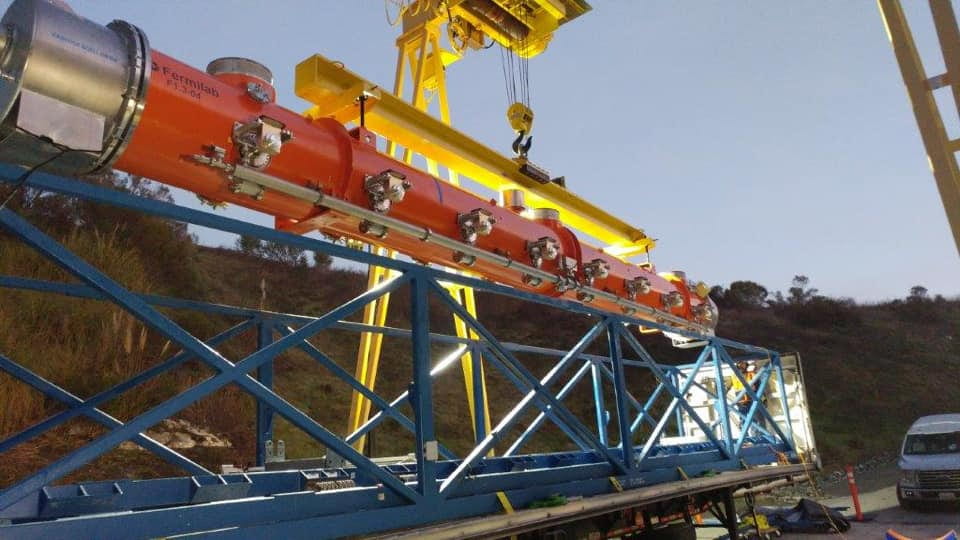What are the physical processes and material properties that determine the ultimate limits to the performance of superconducting RF cavities for next-generation particle accelators? These are central challenges being pursued by CAPST researchers.
Superconducting Niobium RF cavities for acceleration of charged particles to high energies operate near the limit of their electrical current carrying capacity. The key performance measures of SRF cavities are (1) the quality (Q) factor, determined by the dissipation of a.c. Meissner screening currents that confine the accelerating electric field in the vacuum region of the SRF cavity, and (2) the maximum accelerating field in the cavity, Eacc, which is proportional to the surface magnetic field at the vacuum-superconducting interface, Bs. CAPST research aims to determine the fundamental limits determining these key performance measures for state-of-the-art SRF cavities for next generation superconducting RF cavities for high-energy particle accelerators. CAPST researchers are pursuing a multi-disciplinary approach involving materials characterization of superconducting SRF cavities combined with first-principles theory of the current-carrying state of nonequilibrium superconductors near the breakdown of the meta-stable Meissner state.

CAPST co-director, Anna Grassellino, pioneered Nitrogen infusion into Niobium to achieve unprecedented quality factors for SRF cavities.
Is there more performance to be had from Niobium?
CAPST research is both pushing the limit of performance of Nb SRF cavities, as well as Nb3Sn as a possible next generation superconducting material for SRF technology.
- Theoretical limits for SRF technology [read more]
- CAPST research on Nb3Sn SRF cavities [read more]
Fermilab researchers led by Anna Grassellino and Alex Romanenko achieved unprecedented Q values and accelerating fields, Eacc, by infusing Nitrogen into the inner surface of the Niobium SRF cavity.
Quality factor (Q0) versus accelerating field (Eacc) showing the performance of five different SRF cavity surface treatments reaching different quench fields. Publication: Superconductor Science and Technology, 26, 102001, (2013), A. Grassellino, et al.
The Nitrogen treatment process has been implemented into SRF technology and used in the LCLS-II accelerator at SLAC, the world’s first hard X-ray free-electron laser. The photo on the right is the second cryomodule shipped from Fermilab arrives at SLAC on January 22, 2019. One by one the SRF cryomodules are strung together in a 1 kilometer long underground tunnel to form what soon will be the world’s most powerful light source. LCLS-II will enable new discoveries in biology, chemistry and material science. “There is something special about building large particle accelerators to reveal the “secrets” that are invisible to the eye.” A. Grassellino. Photo credit: Fermilab.

